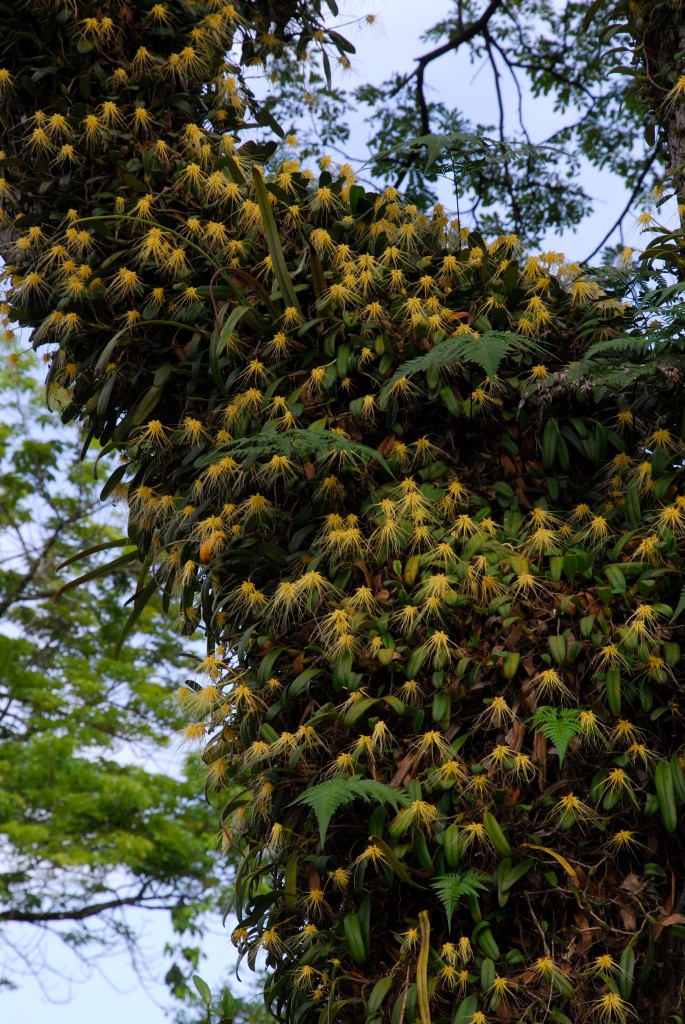Pea Sprouts: Easy To Grow, And Tasty Too
Pea sprouts, also known as 豆苗 (dòu miáo), are a popular dish at Chinese banquets and at 煮炒('zhi char') meals. They are actually the young seedlings of the pea plant,Pisum sativum. Don't mistake pea shoots for pea sprouts: pea shoots come from the growing tips of mature pea plants, and are also edible but less commonly available in our local markets. Pea sprouts can be grown using dried raw pea seeds sold in supermarkets, and make a healthy and nutritious snack or addition to a daily meal.
These sprouts are easy to grow: they need very little space and sunshine, and grow quickly. They can be harvested when they are five to seven days old, and about 7 to 10 cm tall. At this stage, the shoots are tender and their tendrils are just about to emerge from their growing tips.
You can grow your own pea sprouts at home from organic garden peas - just follow the steps below! And for serving suggestions, try out the stir-fry recipe we've provided. By Lim Jin Hong & Pearl Ho
Steps to growing pea sprouts:
Materials needed:
Potting mix, small garden spade, water, organic garden peas, and a suitable planting tray.
Step 1:
Soak the peas in water for about 8 hours. Change the water every 2 - 3 hours, to prevent the peas from spoiling.
Step 2:
Spread a layer of potting soil (1 inch in depth) at the base of your planting tray or container, and sow the soaked garden peas evenly on the soil surface. Cover the peas with a thin layer of soil (1 cm thick). Place in the shade until shoots appear in about three days.
Step 3: Transfer the sprouts to a sunny location and mist them daily. Harvest the pea sprouts when they are about 7 cm tall, just as the tendrils emerge (as shown in the center of this photo). Further tips for growing pea sprouts:
- Watering - Ensure that your pea sprouts get enough water from Day 1 to harvest. Lack of water may cause the tendrils to emerge sooner than expected, which will make the sprouts taste over-fibrous.
- Light - Place your pea plants under direct sunlight once the shoots appear.
- Fertiliser - Fertilising is usually not necessary as the sprouting cycle is short.
- Harvest - Cut at the base of the plant during harvesting, above the lowest node on the stem. This will allow new shoots to emerge for the next harvest. You can harvest each batch of peas up to three times. However, the quality of the sprouts may decline over time.
| Ingredients: | fresh pea sprouts | 200 g, rinsed |
| (Serves 4) | garlic | 5 cloves, finely chopped |
| oil | ¾ tbsp | |
| oyster sauce | 3 tsp | |
| salt | 1 pinch, to taste | |
| cornstarch | 2 tsp | |
| water | 2 tbsp | |
| 'Shao Xing' wine | ½ tbsp (optional) |
Method
Ingredients needed: garlic, oil, oyster sauce, cornstarch and salt.

Freshly harvested pea sprouts, rinsed.

The completed dish: Stir-fried Pea Sprouts with Garlic

An alternative serving suggestion: tuna and pea sprout sandwiches
- Heat the oil in a wok at medium heat until it is smoking hot.
- Stir in the chopped garlic and fry till golden brown.
- Add in the pea sprouts and cover the wok with lid, and simmer the sprouts for 30 seconds. Meanwhile, mix the rest of the ingredients, except 'Shao Xing' wine, in a bowl.
- Lift the lid and stir-fry the sprouts, ensuring that they are cooked evenly. Pour the mixture from (c) on the sprouts. Mix thoroughly and evenly.
- Just before removing the sprouts from the wok, add in the 'Shao Xing' wine by pouring it at the edge of the wok and letting it run down to the centre of the wok.
- Remove the cooked pea sprouts from the wok and enjoy!
Have views or comments on this article? Let us know via this form. If you would like to give us feedback on any other areas relating to our parks and gardens, please submit via https://www.nparks.gov.sg/feedback










SChua 12/22/2013 1:16:33 AM